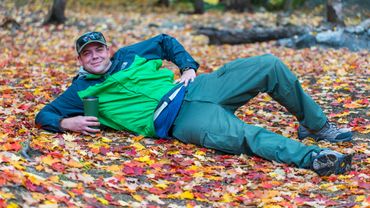Portraiture
Portrait photography is a genre of photography that focuses on capturing the likeness, personality, and mood of a person or group of people. It typically involves creating a close-up image of a subject's face or full body and is often used for personal or professional purposes such as family photos, headshots, or modeling portfolios. To create a successful portrait, a photographer will consider factors such as lighting, posing, background, and composition, as well as the subject's expression and body language. Portrait photographers may use various camera settings, lenses, and techniques to achieve the desired look and mood in their images.
















Tips & Tricks
Please reach us at photonphotographynj@gmail.com if you cannot find an answer to your question.
In portrait photography, the subject is the main focus of the image. The goal is to capture the subject's likeness, personality, and mood, and to create an image that accurately represents the subject and conveys the intended emotion or message. To achieve this, the photographer must carefully consider factors such as lighting, posing, and composition, and must have a good understanding of how to use the camera and lens to create a flattering image of the subject. A good portrait will often have a shallow depth of field, which helps to separate the subject from the background and draw the viewer's attention to the subject's face. Additionally, the subject's expression and body language must be carefully considered, as these elements play a significant role in conveying the subject's personality and mood.
Choosing the right location for a portrait photo shoot is important as it can greatly impact the overall look and feel of the images. When selecting a location, the photographer should consider factors such as the background, lighting, and available space.
For outdoor shoots, a scenic background such as a park or beach can provide a beautiful and natural setting. Indoor locations such as a studio, home, or other unique space can offer a controlled environment with more options for lighting and backdrops.
Additionally, the location should complement the subject's personality, attire, and the intended mood of the photos. For example, a formal portrait may require a more formal setting such as a studio or elegant interior, while a more casual or adventurous subject may benefit from an outdoor or urban location.
Posing is a crucial aspect of portrait photography as it can greatly impact the overall look and feel of the images. A good pose will flatter the subject, help convey the desired mood or emotion, and make the subject look confident and relaxed.
To achieve a good pose, the photographer should consider the subject's body type, clothing, and overall appearance. For example, poses that elongate the body and create clean lines, such as having the subject turn their body slightly away from the camera, can help to create a more flattering image.
The photographer should also consider the subject's comfort level and work with them to create poses that feel natural and relaxed. Communication and collaboration with the subject are key to getting the pose right.
Additionally, the photographer should pay attention to the subject's facial expression and body language, as these elements play a crucial role in conveying the subject's mood and personality.
In summary, getting the pose right in portrait photography requires careful consideration of the subject's appearance, comfort level, and desired mood, as well as good communication and collaboration with the subject.
Candid portrait photography is a genre of portrait photography that involves capturing natural and unplanned moments of a subject. The goal is to capture the subject in their natural state, without any posing or staging, and to create an image that conveys a sense of authenticity and real-life experience.
To take successful candid portraits, the photographer must be unobtrusive and able to quickly and discreetly capture the moment. This may involve using a small, discreet camera and lens, and being aware of the surroundings and anticipating potential moments to photograph.
Lighting can also play a significant role in candid portrait photography, and the photographer must be able to quickly assess and adjust the lighting conditions to ensure that the images are properly exposed and have the desired mood and look.
Additionally, the photographer should have a strong understanding of composition, as well as the subject's body language and facial expressions, as these elements can greatly impact the impact and success of the candid portrait.
In summary, taking candid portraits requires a combination of technical skill, creativity, and a good sense of timing and observation. The end result should be images that capture real, unscripted moments and convey a sense of authenticity and realism.
Capturing emotions and expressions is a crucial aspect of portrait photography, as it is what helps to convey the subject's personality and mood. In portrait photography, the subject's facial expression and body language play a significant role in conveying the intended mood or emotion, and can greatly impact the impact and success of the image.
To capture emotions and expressions, the photographer must be able to connect with the subject and create a comfortable and relaxed environment. This may involve conversation, laughter, and even gentle direction from the photographer. The photographer should also be aware of the subject's natural expressions and body language, and use this knowledge to help guide the subject towards a desired expression.
Lighting can also play a significant role in capturing emotions and expressions, as it can help to create mood, highlight the subject's features, and bring attention to the subject's face. Shadows, contrast, and even the direction and quality of the light can all impact the subject's appearance and the overall mood of the image.
In summary, capturing emotions and expressions in portrait photography requires a combination of technical skill, creativity, and a good understanding of the subject's personality and mood. The end result should be images that accurately convey the subject's emotions and expressions and that connect with the viewer on an emotional level